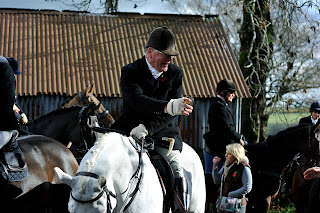I had an email yesterday which brought a huge smile to my face, all about Bailey W:
"Still doing very well indeed and the girls on the yard are dead impressed, as he keeps up with them all on the roads and tracks Went for a lovely canter across the fields today as getting him fitter and me to go out with our local hunt on the 10th Dec. His canter has improved dramatically, he has so much more balance he feels fantastic. He was so sure footed across the muddy field. I do have to admit that I am very impressed with the traction that you get with barefeet! Also one of my best friends that I hacked out with yesterday commented on how well he now moves as she was trotting behind me, and that he’s going better than before.
And finally on a very good note, as I was hacking along the main road a car pulled up next to me, it was my back lady Karen, she was very impressed as she had been watching him from afar and she too said that he looked so well and that he was moving really well, the best she had seen - now that DID put a smile on my face!"
On a less exalted note, there is currently
more discussion on the Horse and Hound forum about "navicular" - whatever that is(!) and barefoot and we have been mentioned. While its good that rehabilitation is being discussed (and thanks to all the owners who've posted their own experiences on there!), there are a lot of misconceptions too and lots of people who are perhaps understandably suspicious.
As an example, one of the questions that seems to be coming up is whether any of the horses here have been x-rayed or MRI-ed following their rehab, which is a fair question (though an email to me might have been a more direct way to get the information...).
The problem, as Cristina pointed out on the forum, is that MRIs cost around £1500 and are only an option for most owners if they have insurance. No insurance company will pay for an MRI on a sound horse, and so horses like Bailey W and Frankie, who are now back in work, will probably never have follow up MRIs because the cost is prohibitive.
I have discussed with a veterinary practice whether they would be prepared to make a joint application for a research grant which would have enabled us to have offered follow-up MRIs to about 10 horses after rehab but the practice have not been able to summon up enough interest to take this forward, sadly.
Equally, once horses have recovered and are back in work, there is no real incentive for owners to have horses re-x-rayed, and as most horses have soft tissue damage as their primary pathology, x-rays don't usually help the diagnosis anyway.
Ultrasound seems like a more cost-effective option but the vets I've spoken to (with the exception of Prof. Jean-Marie Denoix!) don't feel confident in diagnosing DDFT lesions with ultrasound - so we are back to square one again...
Its very easy for people to criticise the research we are trying to carry out here, because we don't have any grant funding which would enable us to do the "gold standard" of pre- and post-rehab MRIs. If I were able to, there would be nothing I would like more than to be able to MRI the horses here at monthly intervals!
What the critics should perhaps remember, before they get too carried away, is that
- Everything which we HAVE been able to document has been done on a shoestring through the goodwill and help of existing owners and vets. Most owners have been amazing about asking their vets to re-assess horses, but for some owners, having their horse back home and in work is enough and they are understandably not terribly interested in having a further vet examination for a sound horse, particularly if there is going to be a significant cost. As a result, follow-up vet assessments are hard to ensure.
- I'm far from complacent about research and would love there to be more being done BUT it doesn't happen out of the blue - it tends to be done once field studies have indicated something worth investigating. If nothing else, the Project Dexter research should be enough of a field study to lead to future research, but I can't carry that out, because I am not a vet... Listen to the news and you will constantly find areas of human medicine where a small trial has been done and preliminary conclusions have been drawn. Then more research needs to be done - same with what we do here. A different, but equally enormous, stumbling-block is that most grant funding has been cut dramatically or totally in the last 2 years so research is even tougher to fund than before.
- There are no comparative studies (as far as I am aware) of different treatments for caudal hoof pain but the horses in our study are (usually) the ones for whom NOTHING else has worked, so its not a case of either/or - we are literally the last chance most of the rehab horses have and if they don't improve here, they will be put down. Lets also not forget that with these types of lameness, there are very few successful treatment options for owners to choose from - there just aren't masses of modern remedies which have proven success with these types of lameness; on the contrary, we are generally dealing with horses who've undergone treatment which has had limited, short-term and sometimes NO benefit. These treatments (inc remedial farriery) are also often extremely expensive.
- MRIs and x-rays, along with nerve blocks, are used to isolate and diagnose a point of lameness which has ALWAYS first been identified by the owner - otherwise the vet would never have been called in! If the owner has the horse back home and is confident that the horse is sound, don't knock it - owners are some of the pickiest people you will ever meet, and they know their own horses inside out :-) Contrary to the poster on HHO, although I have met many owners who have refused to work their horses while they are lame or on bute - even if the vet has advised it - I have never met one who was prepared to work a lame horse.
- As a matter of interest, my old horse, Ghost, was diagnosed with bone damage to the navicular bone and was re-xrayed (at a cost of several hundred pounds to me) in 2007 after he had been sound for some years. The vet who took the x-rays said his navicular bone was as clean as a whistle, but for research purposes that is useless, as we had moved from Hampshire to Devon so 2 different vets were involved, not to mention the fact that the original x-rays were film and the follow-ups digital.
- Not all "barefoot" trimmers are equal, and very little about lameness rehabilitation is to do with trimming - you can lame a horse with a bad trim but you won't make it sound with a good trim. We've had 2 barefoot horses come here as rehabs, after all :-)
Sorry for the verbiage, but it is just a teeny bit frustrating on occasions that other people aren't as excited by horses becoming sounder as I am...I agree its not perfect, but surely its a start?
ETA: I've had another look at the HHO thread and there is a great comment from the original poster - hope they don't mind me quoting them here:
"I would have thought at least one vet would have channelled their amazement at the recovery into something productive (said scans, x-rays, MRI) so that if they come to that point with another client's horse they have another proven option available."
Yep, you would have thought so, wouldn't you? Actually, Jeremy Hyde at Eqwest did precisely that, and it was he who helped set up Project Dexter, but for the other vets its difficult - they see one horse come down here but once it goes home it is seen as a one-off, a freak for which rehab worked - despite me sending them the details of the other horses who've gone through the project. I always update vets with photos, video clips and copies of the research updates but if that doesn't interest them I am not sure what else I can do. For the vets, as well, of course, lack of research is a problem, so the whole thing becomes a vicious circle, only broken when owners are brave enough to research things for themselves and come across other owners who've done the same...
































































